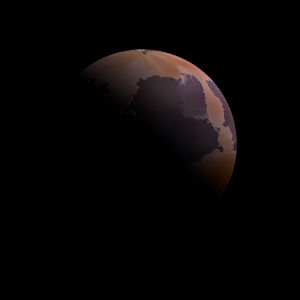|
|
Space Astro
|
Info for exoplanet "Helyp Loge"
| Scientific (actual) data |
|---|
| Name | Kepler-1078 b |
| Planet status | Confirmed |
| Radius | 0.17 |
| Orbital period | 3.00725 |
| Discovered | 2016 |
| Updated | 2021-02-05 |
| Tconj | 2454960 |
| Publication | Announced on a website |
| Detection type | Primary Transit |
| Alternate names | 2MASS J19324814+4303001 b, K02063.01, KIC 7449541 b, KOI-2063 b, KOI-2063.01, WISE J193248.13+430300.1 b |
| Star name | Kepler-1078 |
| Right ascension | 293.2° |
| Declination | 43.05° |
| Mag j | 14.398 |
| Mag h | 14.024 |
| Mag k | 13.932 |
| Star distance | 1215 |
| Star metallicity | -0.01 |
| Star mass | 0.94 |
| Star radius | 0.92 |
| Star age | 4.37 |
| Star temperature | 5612 |
| Star alternate names | 2MASS J19324814+4303001, KIC 7449541, KOI-2063, WISE J193248.13+430300.1 |
| Wikipedia article | Kepler-1078 b |
Back
| |
| Fictional info (?) |
|---|
| Suggested name | Helyp Loge |
| Planet type | Cold planet |
|
| Atmosphere | Krypton | 40% |
| Nitrogen | 21% |
| Hydrogen peroxide | 13% |
| Molecular hydrogen | 11% |
| Argon | 8.5% |
| Ammonium hydrosulfide (NH4SH) | 4.6% |
| Carbonyl sulfide | 0.34% |
| Methane | 0.056% |
| Atmospheric pressure | 0.6 bar |
 |
| Moon | Sisut Ebecar | Large potato shaped rocky comet |
| Google search for Helyp loge |
|
Website by Joachim Michaelis
|
|
|
|